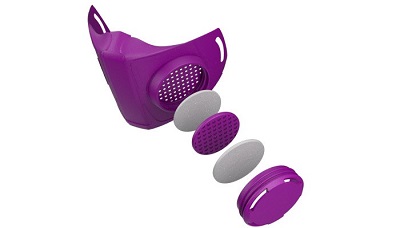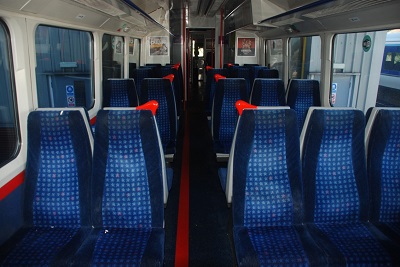As a person in the additive manufacturing
media, well-meaning texts from friends and family members containing 3D
printing news stories are always a good indication of the technology’s footing
in the mainstream conversation. So, as the coronavirus pandemic hit and 3D
printers were poised as the solution to pressing supply chain challenges for
crucial items on the frontline, you can imagine, my inbox was pretty full.

Hospitals brought 3D printers in-house to support production of protective medical equipment, universities loaned their additive capabilities to print parts for local healthcare providers, and 3D printing equipment manufacturers became service providers overnight.
How that awareness and momentum might extend to the coming months and indeed years, particularly as this health crisis remains, is up for debate, and yesterday a trio of panellists across various industry segments came together to discuss what that could look like.

There’s, understandably, a hesitation to say it but the general feeling is that the COVID-19 pandemic has actually been a good thing for the adoption and perception of 3D printing. Panellists Chris Connery, VP Global Analysis and Research at technology market research company CONTEXT, Nadav Goshen, CEO at MakerBot, and Stefanie Brickwede, Founder and Managing Director of Mobility goes Additive and Head of Additive Manufacturing at Deutsche Bahn, aren’t the first to allude to it either. Just last week Formlabs told TCT how it anticipates 3D printing will be adopted at a greater rate than anyone was anticipating pre-COVID, while Protolabs’ CEO Vicki Holt recently shared how she believes the crisis has shone a light on the important role manufacturing plays in innovation and solving problems.
The 3D printed swabs and face shields
produced in their millions have undoubtedly cast positive attention on the
benefits of AM, but as Carbon CEO Ellen Kullman asked in our recent Additive
Insight podcast, the remaining question is, will it stick?

For Goshen who has experienced first-hand the knocking on doors from eager engineers seeking MakerBot’s help to assist in COVID-related projects, the belief is that once that additive light goes on, there’s no stopping its potential.

“We say there is an innovator in everyone, and
this is our vision for MakerBot and we saw that many people, engineers, came
and wanted to help,” Goshen explained. “It's upon us to make sure that they
have the tools to do0020so and I think we're providing them with that. […] Once
it starts it will not end because what an engineer needs is a tool, once they
have the tool, there will come innovation and I think this is what has kind of
started to roll.”
Goshen gave the example of a mechanical engineering
student in Pennsylvania who reached out to MakerBot early on to see if the
company could help with a prototype for a new ventilator. Goshen obliged and
invited them to test out the design on a MakerBot polymer extrusion system at
its Brooklyn offices.
“Now they have this process in mind that they
can make a difference and this is happening in hundreds, maybe thousands of
places all over the world,” Goshen continued. “I think it will stick because
we’ve proved as an industry that additive manufacturing can foster a change in
a very quick way. I think that's what will stick, that additive manufacturing
is the most agile way to come up with new products.”
Brickwede on the other hand, who comes at this from the perspective of both an end-user at Deutsche Bahn and representative for a diverse network for industrial AM companies at Mobility/Medical Goes Additive, is a little more sceptical.

From left: Nadav Goshen, CEO at MakerBot, Stefanie Brickwede, Founder and Managing Director of Mobility goes Additive and Head of Additive Manufacturing at Deutsche Bahn, and Chris Connery, VP Global Analysis and Research at CONTEXT.
“I'm absolutely convinced it will not stick,” Brickwede said. “This will be a continuous growth rate because there are so many companies which are really fighting for their existence so they have to do anything, they have to change something and [additive manufacturing] is a great technology to [speed up] those development processes. This is why I’m absolutely convinced this will keep on growing, especially as there are even more business cases now coming up, like tools you can do for moulds for instance. This is what the railways now do, you can print out jigs and fixtures; it just takes you half an hour to design those, another hour to print out and then you can use it immediately in the maintenance workshops.”

Brickwede shared how the German railway leader’s spare part supply chain was completely disrupted by lockdowns in hard hit areas like Spain and Italy. Having deployed additive to manufacture a number of spare parts, Brickwede said the company experienced “another stage of breakthrough” at board level concerning engagement with AM, and believes other companies will have had similar experiences.


Connery, while noting that CONTEXT still believes the AM industry can grow to a 20 billion USD market over the next couple of years, cautions that there are challenges ahead as businesses try to navigate difficult economies and challenges in markets where additive seeks to serve, like aerospace. The recent closure of Voodoo Manufacturing, a Brooklyn 3D print service provider which operated primarily on MakerBot machines, is a prime example of how temporarily switching 3D print capacities over to PPE production simply won’t be enough for some companies to survive. There have been other casualties too such as staff cuts at 3D Systems and MakerBot parent company Stratasys, both influenced by the pandemic, which mirror impacts experiences across countless industries around the world.

“We expect the demand to continue on but with the caveat […] difficult economies and a lot of the key industries that 3D printing currently caters to still have some difficulty ahead,” Connery explained. “Once we get past all that we do believe that this install base of professional machines, this next generation of engineers who are sequestered at home are going to be the management and CEOs of the next generation and they would have become familiar with additive manufacturing.”
Agility is something AM already has on its side but there are other ways manufacturers may need to become more flexible to continue operating in this new reality. Working from home has become a necessity for businesses in many countries during lockdown periods and we’re becoming much more attuned to using virtual tools and services in our day to day lives. To address that, MakerBot launched its next generation cloud software solution yesterday which has been designed to enhance 3D printing productivity for remote and local users alike. Growth in the professional 3D printing market, which grew by 17% from 2018 to 2019 while every other category of printer took a dip in hardware sales, also indicates that work from home scenarios have had a positive impact on purchases of compact professional systems for remote usage. If these kinds of distributed working settings are to continue as many companies predict, perhaps we’ll see more of an emphasis on developments in software and connectivity to ensure seamless cross collaboration and secure sharing of data (could blockchain may finally have its day in additive now?)
This flexibility also needs to transfer to mindset. Companies that were ticking along nicely with plenty of orders on their books before the crisis hit have suddenly been forced to change how they do things. Goshen says companies are now being encouraged to challenge their supply chain legacies with additive manufacturing, while Brickwede adds that companies are now more willing to try new avenues to remain in business. For example, we saw how automotive suppliers began turning their hand to medical device manufacture when callouts were made to ramp up ventilator production. For companies that were encouraged to try out additive during the pandemic to perhaps plug a supply chain gap or allow their engineers to continue working outside of the office, the next challenge will be how to capitalise on that and find new applications for these machines going forward.